Can one little word change marketing and sales success?
19th December 2018 | Tim Riesterer
A new study highlights the power of “you” versus “we” phrasing in your messaging.

When sending out prospecting messages or presenting solutions to prospects and customers, most marketing and salespeople tend to “we, we, we” all over themselves. No, this article isn’t about losing control of bodily function. It’s about word choice and whether a single word or pronoun-based reference point can materially change the reaction of your audience. Specifically, should you use the word “we” or “you” when prospecting and presenting to customers?
To be clear, this article is not referring to the obviously self-centered form of “we” such as: We’ve been in business for more than 50 years. We have locations all over the world. We’ve developed these inventions and innovations. We’ve worked with these great companies. We provide these products and services. And, we make this brand promise.
In it together?
Instead, this article and related research refers to a different, more subtle form of we-phrasing – the seemingly defensible approach where the word “we” focuses on inclusion and partnering. Fans of this form of phrasing say they are trying to demonstrate a collaborative, shared experience where the word “we” refers to both the supplier and the buyer being “in it together”.
It seems well-intentioned and inherently logical. After all, who doesn’t want to be viewed as a trusted, valuable partner? And, what buyer doesn’t want to hear their vendor claiming to share the experience and provide assurance of collective success?
You-phrasing was considerably more effective than we-phrasing in the majority of questions we asked, especially those linked to interest and intent.
But, is that really how customers hear the word “we” when used in communications and conversations? Even more importantly, is that how they actually react to it? Does it inspire them to take more interest or action leading to purchase? Will you create more opportunities, or increase the possibility of a sale by we-phrasing? Or is there a better way?
The concept of you-phrasing as a replacement for we-phrasing, while slightly obscure, has been around for decades in the academic realms of social psychology and behavioral economics. The premise is that you-phrasing does a better job of unconsciously grabbing attention and transferring ownership to your listener, getting your would-be buyer to personally “try on” the concepts you are sharing – both the problem and the solution.
Previous research findings
Before detailing the results of our most recent study, it is worth quickly reviewing the existing science on we-phrasing versus you-phrasing. The scientific concepts are often referred to as “self-relevance” and “invoking imagination”.
The self-relevance effect is the tendency for people to recall information at a much higher rate when it is related to themselves. But just being able to better remember something by itself doesn’t assure greater interest or purchase intent. And, because no self-relevance studies examined these more business-related consequences, we don’t have any such proof.
The invoking imagination effect has been studied more commonly in business-relevant situations. Perhaps the best-known study of you-phrasing and invoking imagination was conducted by persuasion expert Robert Cialdini back in 1982. Researchers went door-to-door testing people’s attitudes toward cable television – back when cable TV was still a new thing.
In one script, the prospect was told what the new service would do, using a traditional feature/benefit approach. In the second script, they inserted the word “you” as participants were asked to imagine what it would be like to use the service. For example: “When you use it properly, you will be able to plan which of the events offered you wish to enjoy.”
The result: people who heard the you-phrasing description of the service agreed to subscribe 47% of the time, whereas the traditional group agreed only 20% of the time. The simple use of one small word, you, had doubled the number of sales in this experiment.
Based on this research, it appears one improvement you can confidently and easily make tomorrow is to replace all of your we-phrasing with you-phrasing.
New industry survey: what pronouns are you using?
That was more than 35 years ago. And, yet a lot of marketing and sales best practices still proclaim we-phrasing to be the better approach – defending it with all the seemingly rational explanations about collaboration and teamwork and so on that we described earlier.
According to a recent industry survey, conducted by my company Corporate Visions and our partner Vengreso (a digital selling company), most marketers and sellers identify themselves as we-phrasers.
More than 47% said they use we-phrasing to deliberately position themselves as a trusted partner which brings expertise and insights to customers. Meanwhile, 40% said they use you-phrasing to focus on customers and encourage them to take ownership of their challenges and possible solutions. (The next largest group – just 7% – said they didn’t know, or they hadn’t given any consideration to using a specific pronoun approach.)
However, things got interesting when we asked the next question: “Regardless of which approach you currently use, which of these personalization approaches do you think would be most impactful in terms of generating interest, response or buying intent?”
It turns out most we-phrasers are not too confident in their approach because more than 52% said they should actually be using you-phrasing to get better results. And, only 37% held onto the belief that they should continue to use we-phrasing to get the desired outcomes.
That’s a big shift in response between what people do versus what they think works better. We don’t know for sure whether those who gave different answers between questions 1 and 2 had never really thought of you-phrasing as an option before this survey, or if their company really has a policy that forces them to use we-phrasing. But, in either case, it appears a large number are now rather conflicted.

Professor Nick Lee: Professor of Marketing, Warwick Business School.
Studying we-phrasing versus you-phrasing
These are exactly the kind of conflicted survey results that get us excited to run a more rigorous, simulation-based study using would-be buyer responses versus just asking marketing and salespeople their opinions. And, since it has been over 35 years since an academic study focused on you-phrasing, it seemed a good time to do another one.
Working with Professor Nick Lee of Warwick Business School, we created two different studies to examine the impact of changing pronouns (“we” versus “you”) in two marketing and sales environments:
Study 1 – A “cold” email sent to an unsuspecting prospect who has no knowledge or notion that they need the products or services from the company sending the email. The goal was to measure the interest level and urgency to solve the problem being presented.
Study 2 – A “warm” communication provided to a prospect who has expressed interest in a particular solution, and now wants to learn more in order to possibly make a decision. The goal was to measure interest and intention in buying.
Study 1 – Prospecting email
The scenario featured a business coaching and consulting service called Business Impact. It included a formal training event, ongoing consulting calls and a virtual library of support materials. They were told that often entrepreneurs and business executives choose consulting, coaching and mentoring services to help them improve their company performance.
Four messaging approaches were created and tested with more than 400 participants, who were randomly assigned to one of the four conditions (approximately 100 each):
- You-you-phrasing – in this email the problem set-up and the solution were presented as you-phrased messaging.
- We-we-phrasing – in this email the problem set-up and the solution were presented as we-phrased messaging.
- You-we-phrasing – this email split the problem set-up (you-phrased) and solution presentation (we-phrased).
- We-you-phrasing – this email split the problem set up (we-phrased) and solution presentation (you-phrased).
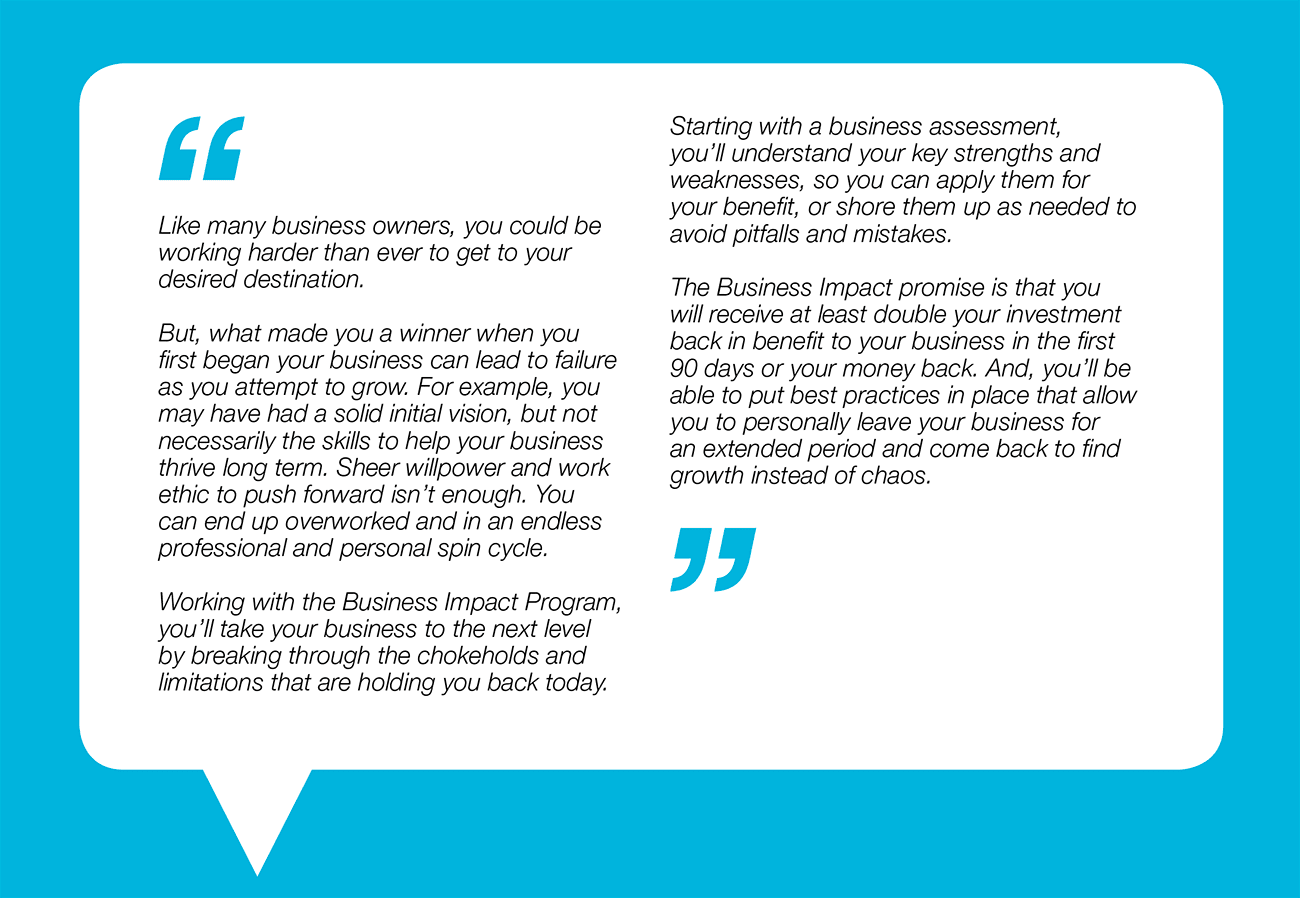
To give you an idea for the subtle content and message change, see the sample emails for you-you (Figure 1) and we-we-phrasing (Figure 2). (The additional hybrid emails – you-we and we-you – simply cut and pasted the respective sections).
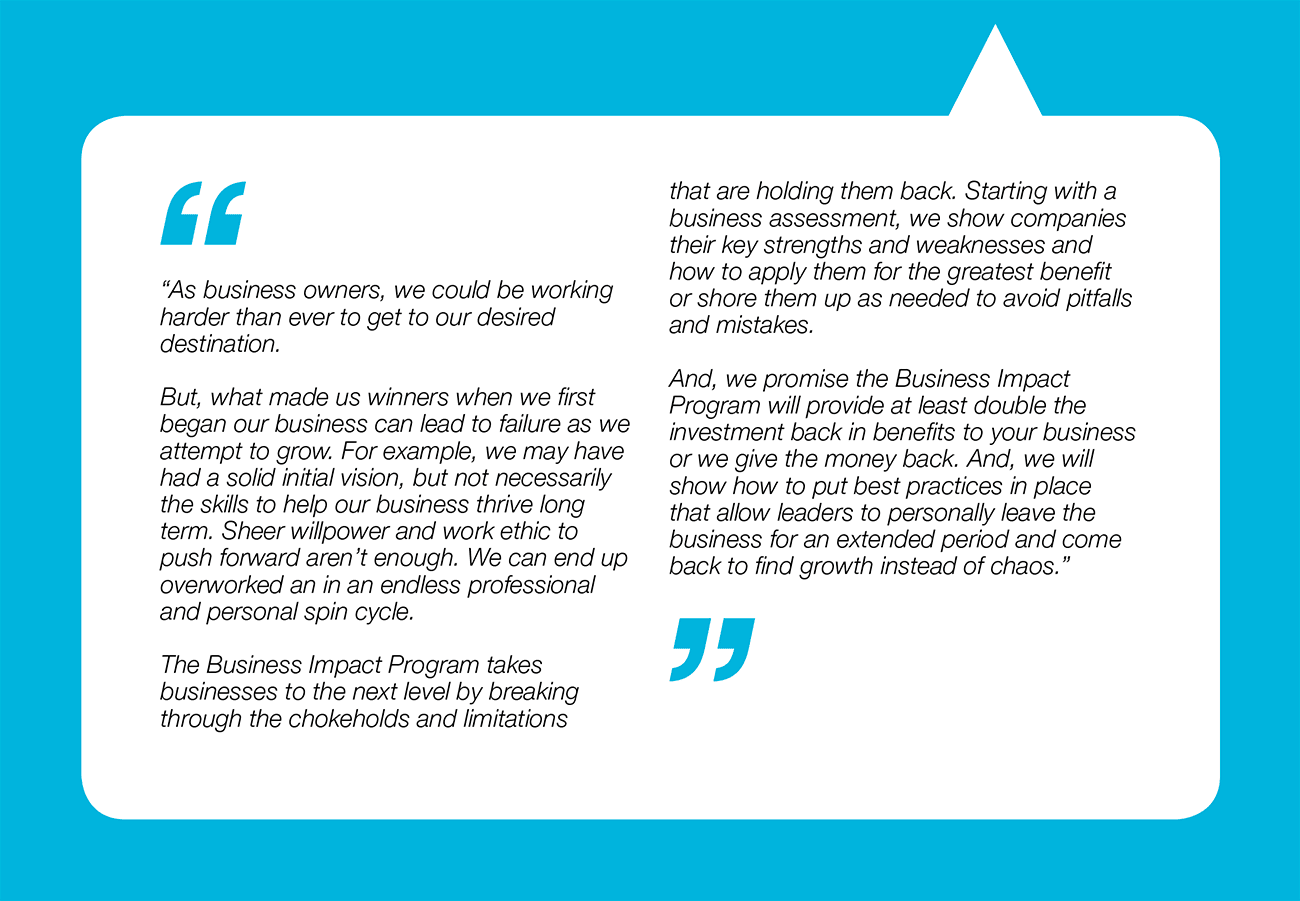
Results – study 1
You-phrasing was considerably more effective than we-phrasing in the majority of questions we asked, especially those linked to interest and intent. For example, participants felt 21% more responsible for solving the expressed problem in the you-phrasing condition than the we-phrasing condition (Figure 3). This is critical because you want your audience to take ownership of the issue and be willing to champion the opportunity.
Similarly, the audience felt much more strongly (13%) that they “must take action” in the you-phrasing condition than we-phrasing. It goes without saying that increasing urgency to do something about the problem is a key outcome for your demand-creation messaging.
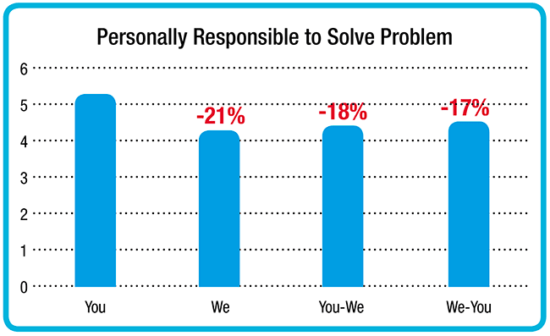
Figure 3: Measure of personal responsibility to solve problem for you-
phrasing versus other conditions.
While creating a slightly lower effect size, you-phrasing beat we-phrasing in several more areas important to demand-generation communications:
- Important to future success and growth +9%
- Think deeply about the problem +8%
- Feel confident to take steps to solve the problem +6%
- Unusual or unexpected message +5%
- Compelling message +4%
Getting your prospect to see the situation as “important to their future success and growth” helps raise the issue to the top of their strategic agenda, which is critical to creating a qualified opportunity. In this case, you-phrasing gives you a nearly double-digit advantage over we-phrasing. Likewise, the rest of the examples on the list are all reactions you want to win with your prospecting message, and again, you-phrasing consistently outperforms the collaborative form of we-phrasing.
Study 2 – Solution story
The scenario again featured a business coaching and consulting service called Business Impact. It included a formal training event, ongoing consulting calls and a virtual library of support materials. They were told that often entrepreneurs and business executives choose consulting, coaching and mentoring services to help them improve their company performance.
The test conditions were expanded versions of the email. They contained considerable elaboration on the problem and the solution to represent a communication similar in length to a website landing page or a typical two-page promotional flyer. (The examples are too long to publish here, but each maintained the same type of phrasing presented in the email examples.)
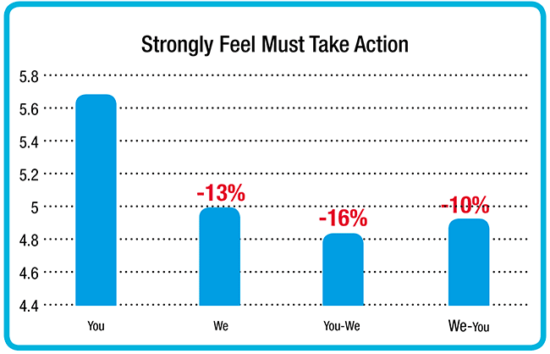
Figure 4: Measure of strength of feeling to take action for you-phrasing versus other conditions.
The four messaging approaches were tested with more than 400 different participants from the previous study, who were randomly assigned to one of the four conditions (approximately 100 each):
- You-you-phrasing – in this example the problem set-up and the solution were presented as you-phrased messaging.
- We-we-phrasing – in this example the problem set-up and the solution were presented as we-phrased messaging.
- You-we-phrasing – this example split the problem set-up (you-phrased) and solution presentation (we-phrased).
- We-you-phrasing – this example split the problem set-up (we-phrased) and solution presentation (you-phrased).
Results – study 2
Again, you-phrasing was considerably more powerful than we-phrasing in two of the most important outcomes of a solution presentation: “Convincing Case to Purchase” (+11%) and “Likely Intention to Purchase” (+10%). Thought of another way, if you decide to stick with we-phrasing in your solution stories, you will present an 11% less convincing case, and your buyer will be 10% less likely to make a purchase.
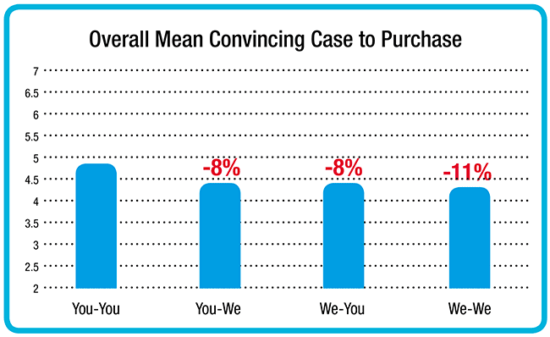
Figure 5: You-phrasing performance in making a convincing case to purchase versus other conditions.
While creating a slightly lower effect size, you-phrasing also beat we-phrasing in several more important decision-related questions:
- Think deeply about the problem and solution +7%
- Compelling message +6%
- Important to future success and growth +5%
- Credible message +2%
Getting your prospect to think more deeply or put effort into processing the problem they are facing and the solution you are providing is foundational to getting to a decision. In this study, you-phrasing drives considerably more processing than the collaborative form of we-phrasing. In all these cases, you-phrasing outperforms the collaborative form of we-phrasing.
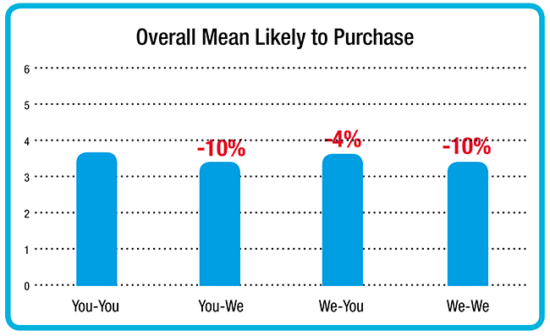
Figure 6: You-phrasing performance in intention to purchase versus other conditions.
Research conclusions
Given how hard it is to create pipeline and close deals, marketers and salespeople should be looking for any advantage you can give yourself. Based on this research, it appears one improvement you can confidently and easily make tomorrow is to replace all of your we-phrasing with you-phrasing.
Often, winning is about finding that small edge or incremental advantage. Regardless of the effect size, these results demonstrate consistent, data-backed support that you-phrasing will provide an unconscious competitive advantage over we-phrasing for hitting your marketing and sales goals.



